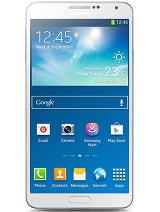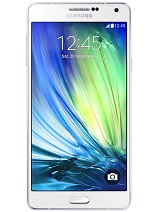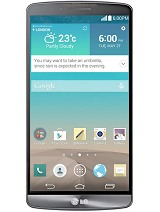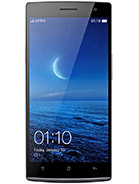Vivo X Shot Review
VIVO X SHOT REVIEW





Introduction
Another Chinese flagship but with a twist. If vivo rings a bell at all, it's most probably the X5Max, the world's slimmest phone. Not a bad thing to be known for but vivo isn't just about looks. This Chinese maker isn't a discounter either - vivo is more like Oppo, less like Xiaomi.
It is a limited lineup where most of the recent models do stand out in one way or another, helping vivo build a reputation as a premium phone manufacturer. vivo is known for experimenting with imaging and audio technology and using components that you don't get every day in phones made in China. The vivo Xplay3S was cheered by audiophiles and the Xshot we're about to review is a flagship cameraphone.
The vivo Xshot is an exquisitely built phone with premium finish, formidable specs and a camera setup which almost puts it in a league of its own.

The vivo Xshot is available in two versions. One is powered by a Qualcomm Snapdragon 801 SoC, with four CPU cores clocked at 2.3 GHz, 3GB of RAM and 32GB of storage. The other, lighter version packs a Snapdragon 800, 2GB of RAM and 16GB of inbuilt memory. Other than that, the two handsets are identical. Both variants are typical 2014 flagships - which isn't necessarily a criticism. After all, the vivo Xshot was released last summer. Similar to a Samsung Galaxy Note 3, with a duly adjusted price.
Key features
- 5.2" 16M-color 1080p IPS LCD capacitive touchscreen
- Quad-core Qualcomm MSM8974AA Snapdragon 801 or Snapdragon 800 at 2.3 GHz, 2/3 GB RAM and Adreno 330 GPU.
- 13MP camera with 4K video, OIS, f/1.8 and dual-tone flash; 8MP, wide (84 degree) front-facing camera with LED flash and 720p video.
- Dedicated two-stage camera shutter button.
- 16GB of built-in storage and a microSD card slot
- LTE Cat. 4 (150Mbps), Wi-Fi a/b/g/n, GPS/GLONASS receiver, Bluetooth v4.0
- Standard 3.5mm audio jack
- Accelerometer, proximity sensor, gyroscope and compass
- Active noise cancellation with a dedicated mic
- 2,600mAh non-removable battery
Main disadvantages
- Stuck on Android 4.3 Jelly Bean
- Non-removable battery of rather small capacity
- No WiFi ac support
- UI can be confusing at times, suffers from bad translation
- No Full HD video on front-facing camera, despite the 8MP resolution
Graphics are courtesy of Adreno 330, so quite a lot of computing power there as well. The Xshot is equipped with a 5.2-inch IPS LCD panel, of Full HD resolution and 424ppi. It is sharp and clear, but quite reflective at times.
The camera setup though is undoubtedly the main entry on the specs sheet. The Xshot packs an ambitious 13MP sensor, complete with a f/1.8 aperture, optical image stabilization and 4K video recording capabilities. This one should be able impress at low-light shots and we can't wait to take it out for a spin.
The front-facing shooter is very nice as well at 8MP and it even has its own dedicated LED flash, so selfies should also come out quite nice as well.
The vivo Xshot is a single-SIM LTE-enabled smartphone. It runs what is technically Android, but about as custom as it gets. vivo's own custom version of Android is called Funtouch OS. The version is 1.2 and is based on Android 4.3, so there is definitely room for improvement there. Other than that, the GUI is really gorgeous and clean with a distinct Apple vibe, but not too much, like we've seen in so many other Chinese phones. vivo has thrown in a few nice air gestures and a timeline of user interactions, but there are still some rough edges to polish.
With that in mind, we're about to start exploring this Chinese offering. Coming up next is the usual unboxing and hardware checkup.
Unboxing
The vivo Xshot comes in a square box, pretty spacious by today's standards. The package is made of very durable cardboard, so shipping damage should not be an issue.
Inside the all-white box, there is a tray that houses the actual phone and underneath it, four dedicated compartments, coated in plastic that hold quite a few goodies. The vivo Xshot comes with a powerful 2A A/C adapter, a white microUSB cable and cool looking ear-buds, which are separately packaged.
vivo has a reputation of delivering exquisite audio and the bundled vivo XE600i headphones look quite up to it.
Another thing vivo has thrown in the bundle is a transparent bumper case. A SIM and microSD eject pin is also included. All in all, vivo has cut no corners with the packaging and the accessories add to the premium feel of the Xshot.
360-degree spin
The vivo Xshot is a thicker than its record-breaking sibling, the vivo X5Max, but at 146.5 x 73.3 x 8mm it's still nicely compact. Its shape and trim really help this feel as they make it appear slimmer than it actually is. The vivo Xshot tipped the scales at 148g.
Design and build quality
The vivo Xshot is stylishly simple. The materials used and the build quality are both superb. The body is mostly plastic, with the notable exception of the metal frame that wraps the device all around. It has a very nice matte chrome look with two small sloping edges towards the back and the front, which both share a lighter, shinier finish.
This little accent really makes the phone stand out and is also quite useful for getting a firm grip. In fact, there are quite a few subtle touches on the vivo Xshot, quite elegantly executed.
The metal frame gets thicker around the top and bottom, really accenting the slightly curved back. It is also complete with four small plastic inserts - two to trace the USB port and another pair near the top of the phone, on either side.
According to vivo's website, the Xshot is only available in white, just like the review unit we have. A quick online search, however, reveals what appears to be a black version with quite an interesting pattern, which almost looks blue under the certain lighting.
The vivo Xshot feels very good in the hand and also pretty sturdy. There are no apparent build quality blunders, everything is nicely put together with no cracks or rough edges.
As far as materials go, the plastic in question feels good to the touch, and the matte finish on the back is quite durable and does not catch fingerprints easily.
Controls
The vivo Xshot boasts a 5.2-inch Full HD IPS LCD screen with 424ppi. It is quite sharp and crisp and does a splendid job but at the Xshot's price point, an AMOLED screen would have been a lot better. The bezels around it are quite thin and the vivo Xshot offers a pretty good screen-to-body ratio of 69.4%.
Above the screen, vivo has created a sort of a mess. The earpiece is crowded by the proximity and ambient light sensors, and the front-facing camera. The phone also has a front-facing LED flash to make the space even busier. The sensors and flash are right beside the speaker, on the right, while the camera is way off to the left. The LED indicator light is even further to the side.
Right underneath the display, we find three capacitive buttons with a very subtle silver trim and nothing else. These are pretty much standard: Menu, Home and Back left to right.
Going round the device, we find the left side mostly empty, except for a single ejectable slot, which houses both the SIM compartment and the microSD tray. It looks pretty flush, but we definitely have a grudge with it. The locking mechanism seems to be a little loose and the cover rattles. This would be barely noticeable, but it does make a very distinct metal rustling sound when shaken. Hopefully, this is a unit-specific problem.
The right side is where the volume rocker and Power/Lock button are, as well as the dedicated camera shutter button. It is nicely positioned near the bottom of the device and is within comfortable reach when shooting in landscape orientation. It has a proper half-press, a thing that modern flagships have sadly long given up on.
The 3.5mm headphone jack is placed on the top of the device, dead center and is accompanied by the noise-cancelation mic.
The bottom of the phone only features a microUSB port and a microphone. No speakers or screws are to be seen.
Going round the back, we find the 13MP camera lens dead center at the top with a dual-tone LED flash right next to it. All of the electronics to power the OIS-enabled, f/1.8 camera really take up space and the camera module is protruding quite a bit.
Other than that, the back of the vivo is very slick and nice to the touch. The white finish is superb and the subtle curve makes for a great feel in hand. The only other thing found on the back, besides the logo, of course, is a speaker grille.
A rear-mounted speaker can get easily muffled, but the Xshot's rear curve seems to have addressed that issue. The camera bump also helps lift the handset off the surface it's resting on - we just hope it is scratch-resistant.
Display
The vivo Xshot is equipped with a 5.2-inch IPS LCD display, with a resolution of 1920 x 1080-pixels. Colors are nice and warm, but could by a little more saturated. Viewing angles are also nice - among the better we have seen lately.

Sharpness is of no issue at 424ppi and even the smallest font sizes are no challenge at all. One small complaint we have is that a black strip around the screen hasn't been covered by the bezel. Visible at all times, it is slightly off-putting.
The display matrix is standard RGB.

As far as contrast goes, the vivo put in decent if unspectacular numbers on both 50% and 100% brightness. Brightness is high, but blacks are not particularly deep, which hurts contast.
| Display test | 50% brightness | 100% brightness | ||||
| Black, cd/m2 | White, cd/m2 | Black, cd/m2 | White, cd/m2 | |||
| 0.37 | 315 | 862 | 0.58 | 534 | 917 | |
| 0.22 | 248 | 1135 | 0.4 | 448 | 1123 | |
| 0.33 | 280 | 842 | 0.68 | 580 | 852 | |
| 0 | 274 | ∞ | 0 | 529 | ∞ | |
| 0 | 175 | ∞ | 0 | 349 | ∞ | |
| 0 | 149 | ∞ | 0 | 379 | ∞ | |
| 0 | 291 | ∞ | 0 | 399 | ∞ | |
| 0.17 | 164 | 940 | 0.73 | 679 | 929 | |
| - | - | - | 0.65 | 866 | 1333 | |
| 0.14 | 109 | 763 | 0.72 | 570 | 789 | |
| 0.39 | 317 | 805 | 0.75 | 598 | 799 | |
| 0.2 | 245 | 1219 | 0.46 | 577 | 1256 | |
| 0 | 167 | ∞ | 0 | 358 | ∞ | |
| 0.31 | 290 | 931 | 0.59 | 551 | 937 | |
Sunlight legibility is quite good - the reflectivity of the screen is about average, but the high brightness still helped the Xshot to a good score in our test.
Sunlight contrast ratio
- Nokia 808 PureView4.698
- Motorola Moto G 4G2.546
- HTC One Max2.537
- Nokia Lumia 7202.512
- HTC One2.504
- Motorola Moto G2.477
- vivo Xshot2.465
- Sony Xperia Z2.462
- Xiaomi Mi 42.424
- Samsung Galaxy S III mini2.422
- Lenovo Vibe Z2 Pro2.416
- LG G Flex2.407
- Samsung Galaxy mini 21.114
Battery Life
The vivo Xshot packs a 2600mAh battery that is non-removable.
The phone did okay in our traditional battery test, scoring an overall endurance rating of 57 hours.

Talk time and video playback are perfectly normal, but browser performance was a disappointment. The custom application is really taking its toll on the battery.
Our proprietary score also includes the standby battery draw, which is not featured in the scorecard.
Our battery testing procedure is described in detail in case you want to learn more about it.
The Xshot has a power-saving option called "Super saver". It is only accessible through the power options menu, which appears when you hold down the power button. This is one of many items, which seem to be oddly placed in the OS, but more on that later.
What it does is, essentially turn the vivo Xshot into a feature phone. The screen gets dimmed and all that remains accessible is the 2G voice calling functionality, messaging and the clock.
Connectivity
The vivo Xshot comes equipped with quad-band 2G/GPRS/EDGE and tri-band 3G with HSPA (up to 42.2Mbps of downlink and 5.76Mbps of uplink). As far as LTE goes, it is important to once again note that only the 32GB version supports both FDD-LTE and TD-LTE. Otherwise, the Snapdragon 800 and 801 both offer Cat4 150/50 Mbps speeds.
Local connectivity is covered by a single-stream Wi-Fi a/b/g/n, as well as Bluetooth 4.0. It is kind of disappointing that vivo hasn't opted for a WiFi ac modem, especially, considering the price the Xshot is going for. GPS and GLONASS support is enabled. There is no FM radio, NFC or an IR port.
Camera has its ups and downs
The camera setup is definitely among vivo's key selling points for the Xshot. It is not often that we see a 13MP module with OIS, f/1.8 aperture and a dual-tone, dual-LED flash. The front-facing shooter does not disappoint either. It is a capable 8MP model with an 84-degree wide angle lens, so you can get all of your friends it the frame.

But the main camera is definitely the star of the show. The impressive specs sheet should allow it to take superb low-light shots, combine that with the flash and OIS and the vivo Xshot should be more than capable of handling available light shots better than all of its rivals. The maximum still resolution in can produce is 4160 x 3120 pixels in 4:3 mode and the phone is capable of recording 4K video at 3840 x 2160 pixels in 16:9 mode, well, technically UHD.
The camera UI is incredibly simplistic with only a few options laying around. This, of course, is definitely not bad in itself, but phone, which is praised because of an impressive camera needs to have something to impress with on the software side, as well as the hardware.
It turns out, that manual control is very much present, but in a separate pro mode. It, however, is so masterfully hidden, that we felt like discovering an Easter egg when we finally found it. If you carefully swipe the shutter button to the left and drop it at the edge of the viewfinder the mode appears with a whole array of fine-tuning options. Shutter speed, ISO, white balance and even focus distance can all be adjusted manually.
The app also offers some visual goodies, like effects and water-marks. All of them can be previewed live and applied to both shots and clips, which is nice.
There are, of course, standard modes, like HDR, Face beauty and Panorama, which we have come to expect from any modern phone. But there are also dedicated sports and Night modes, which is a nice little touch. There is also a bokeh option, which produces a nice blur effect, but requires some fiddling with the manual focus to get the desired result.
PPT mode is somewhat of an oddity but it works out quite well. What it does is analyze a shot of a whiteboard or paper, then trim out the unnecessary background and straighten everything out, so it can be read easier. It works quite well, but lacks any manual adjustment, so if the algorithm doesn't cope, there is not much you can do. The original shot is saved as well, though, which is nice.
POSE mode is quite odd as well. What it does is basically overlay outlines of people in various poses on your screen. The premise is, supposedly, that this would help your subject look better in the shot, but frankly, we think most users can cope without it.
Micro video is another nice little addition. It lets you record short videos, 6 seconds to be exact with multiple scenes easily. The phone records as long as you are pressing the touchscreen and pauses when you let go, so no more stitching is required for a quick vine clip.
The Children mode is downright weird. It basically allows you to use face detection to capture any split-second glance your kid gives you and also tries to attract the youngster by producing odd sounds.
The vivo Xshot produces very nice photos. Colors are pleasant, vivid and quite accurate and edge-to-edge sharpness is quite good as well. The shots come out clear with a nice dynamic range. The two-stage dedicated shutter really helps with the focus. We did notice some slight underexposure, but it is definitely nothing to be concerned with.
As far as the image quality is concerned, the Xshot produces photos with decent colors and a good amount of detail in their center. There's very pronounced corner softness, though, so things near the edges don't look nearly as good. Contrast is good, while noise is slightly high but at least it's of the less irritating luminance type. All in all the images are good, although not quite flagship-worthy.
The 8MP front-facing camera produces rather soft images with very little detail. The high-res sensor feels wasted here, but at least the ultra-wide lens and the front-facing LED flash are rather more useful.
The vivo Xshot didn't mange to get very close to subjects so its macro capabilities are rather limited. Even that way however, the fast F/1.8 lens allows for some blurring of the background - a desired feature among cameraphone users.
We gave the Xshot's HDR mode a try and found that it finds a pretty good balance between adding extra dynamic range and contrast - highlights are preserved without getting flat unrealistic images. Unfortunately the algorithm also produces some artifacts - notice the sky in the second picture.
The vivo Xshot can shoot panoramas in both portrait and landscape mode. Shooting one is easy and straightfoward. Results are also very pleasant with almost no noticeable stitching or any other artifacts.
Naturally, we shot our test posters with the Xshot and here's how it fared, compared against the Samsung Galaxy S6 and the Sony Xperia Z3. Of course, our tool allows you to compare it against any other smartphone that we've shot with.
Decent UHD video, shooting modes are limited
The vivo Xshot can record UHD videos at about 25fps, as well as 1080p at 30fps. Apart from the aforementioned visual effects, you can't really adjust much as far as video recording goes. There is no high frame rate or time lapse mode, but you can shoot videos in HDR, or at least the app allows you to leave it on, as there seemed to be hardly any difference in the end-result.
UHD videos turn out quite nice. Everything looks smooth with an okay level of detail and nice colors. The Xshot can only do about 25fps in this high resolution mode with a bit rate of about 50 Mbps. The audio is 2 channel AAC at 96 Kbps.
1080p, on the other hand, really doesn't impress. Our test videos came out quite blurry and the level of detail is really poor. It seems like a combination of bad compression and misbehaving processing. Our best guess is that at Full HD, the device throws in some extra digital stabilization, which does more harm than good.
At 1080p videos have a bitrate of about 16 Mbps and are shot at a stable 30 frames per second. Audio is the same - stereo at 96 Kbps AAC.
There is also a quite noticeable amount of jitter in both videos. At first we blamed the wind and cars passing by, but this was only part of the story. When we eliminated the cars and shot in windy conditions alone, the jitter was still there. There was even a slight hint of it while shooting indoors. It could be the optical stabilization, or perhaps some digital counterpart being poorly setup or the autofocus behaving strangely.
We can't really say for sure, but this results in very jittery videos, especially around fine edges and details and really ruins the otherwise nice UHD video, to mention the badly compressed 1080p one.

Final words
The vivo Xshot is an orthodox device that certainly has its ups and downs. Quite a few nice ideas went into it although the execution is not always top notch. The novelty is definitely there with an f/1.8 aperture OIS camera and a sleek custom OS, but as we saw those aren't quite as impressive in real life as on paper.

Vivo had all the right ingredients - materials, hardware and good UX ideal, but also comes with a few glaring omissions that flagships shouldn't normally have. For one, the phone is powered by a very outdated OS and we also have the camera failing to deliver on the promises made by its specs.
The Snapdragon 801 SoC, coupled with 3GB or even 2GB of RAM should be quite enough for a blazing fast experience, but the harsh reality is that the vivo Xshot under-delivers here as well and is easily outmatched by equally specked devices.
Vivo Xshot key test findings
- Great design and top-notch premium materials. Nicely shaped body, feels really good in the hand.
- The IPS LCD display is quite nice, bright with 534 cd/m2 white on full blast and very sharp at 424 ppi. Viewing angles are also surprisingly good for an LCD.
- Battery life is perfectly adequate at 57 hours, but steer clear of the default browser.
- Funtouch OS is very stylish and forks fluently, but is quite outdated, being based on Android 4.3; Menu order is often chaotic and void of logic; There are a lot of customization options and the UI seems really polished with a uniform look and feel throughout the whole OS and the bundled apps.
- The phone performs quite poorly in benchmarks, even though it has quite capable hardware.
- The speaker isn't particularly loud and scored below average in out tests.
- Video player handles all video and audio codecs, save for AC3 sound and subtitles.
- Audio output quality is quite good.
- The 13MP camera takes quality stills, the default app offers little options. HDR works very well.
- Video recording is somewhat troublesome with constant, inexplicable shakiness. UHD video quality is superb, but 1080p compression badly damages detail.
The fact is that, you can easily pick up a better performing phone for around what vivo is asking for the Xshot, especially the 3GB "flagship" one and you don't really need to look very hard.
Samsung has a lot of competition to pit against the vivo Xshot. First up, there is the Galaxy S5, last year's flagship offer by the Korean giant. It is pretty much identical to vivo Xshot for the better part of its specs sheet. It is powered by, pretty much the same Qualcomm Snapdragon 801 SoC and has 2GB of RAM and 16GB or 32GB of onboard storage. The screen is only a tenth on the inch smaller, but is of the Super AMOLED variety.
Seeing how the Galaxy S5 is a former flagship device, Samsung has taken the liberty to pack full of features to the brim. It even has a PayPal certified fingerprint sensor and a heart rate monitor, so you definitely won't miss anything on the hardware side. Things are looking even better on the software front, as the device recently got updated to Android 5.0 Lollipop. The S5 is well within the budget frame of the vivo Xshot as well.
If, however, you feel like going bigger, there is the Galaxy Note series, and in this price range - the Galaxy Note 3. Just like the S5, it is a deprecated top-of-the-line offer, but it still packs quite a punch. It was treated to most of the same sensors, technologies and trinkets and even has some of its own, like the S-pen and multi window. The chipset is bit older - the Snapdragon 800 and there is in also an Exynos model, but, as is evident from the benchmarks, the device is still quite capable and mostly outperforms the vivo Xshot. Lollipop is also available here.
The Galaxy A7 is yet another viable Samsung option. It is a brand new 2015 model and is the top offer in the A-series. It's metal exterior gives it an upper hand in terms of design, but it comes with the mid-range Snapdragon 615 chip which is hardly ideal.
The LG G3 is another flagship from a top tier manufacturer that costs as much as the vivo Xshot. Once again, it shares the same Snapdragon 801 chipset with the Xshot and even has the same two RAM version - a 2GB and a 3GB one. It, however boasts a 5.5-inch QHD LCD and already got promoted to Lollipop.
The list goes on with Sony's Xperia Z3, also a current flagship. Its specs sheet is strikingly similar to the vivo Xshot. Qualcomm Snapdragon 801, 3GB of RAM and a 5.2-inch IPS LCD display with a ppi of 424. This IP68 Sony device is very close in terms of price as well and is thus a viable alternative. Also, its 20.7 MP camera is arguably better than the one in the Xshot, although neither is particularly great.
And if the above was not enough, there here are a few more nice options to consider, courtesy of Oppo, Xiaomi and OnePlus.
So the vivo Xshot is not finding itself in a particularly great spot - right now its price puts it against some very elite devices and its imperfect firmware deprives it or some of its key weapons. It's an uneven battle, but if vivo acts quickly perhaps not all is lost.
A quick firmware update to Lollipop with a side of bug-squashing would be a great place to start. Fine-tuning the camera processing algorithm so it extracts more from the capable hardware would be next on the list, while a small price cut will already put the Xshot in the role of a favorite. It's entirely up to vivo to try and get the Xshot out of the tricky situation it put it in.
Subscribe to:
Post Comments
(
Atom
)





























































This comment has been removed by a blog administrator.
ReplyDelete